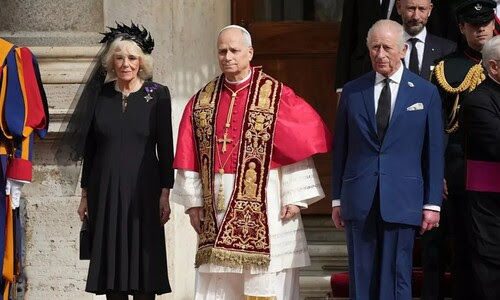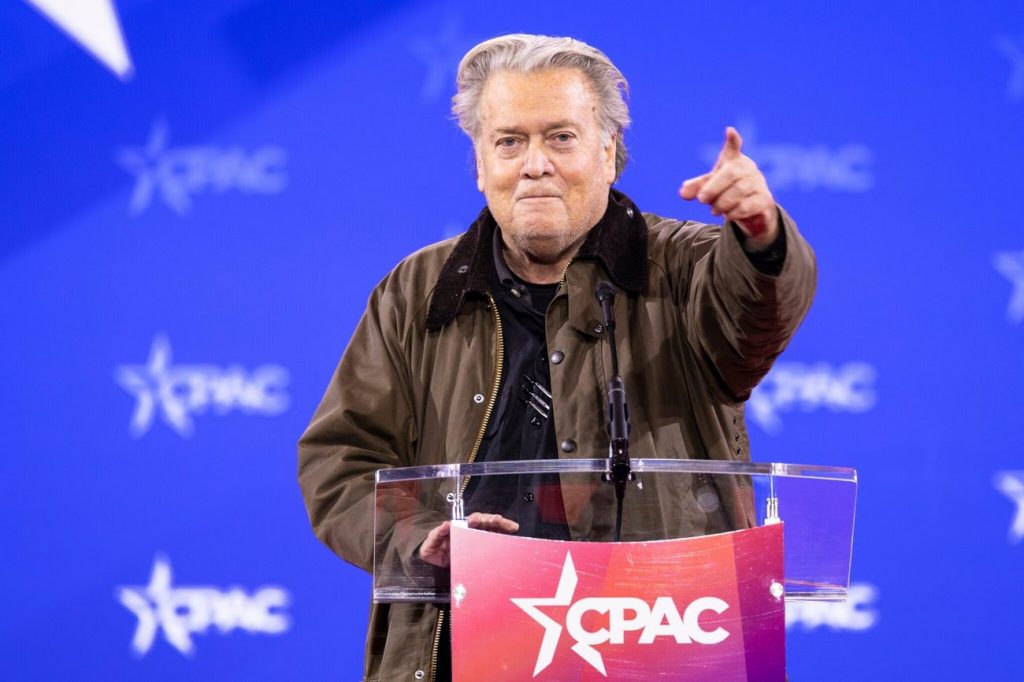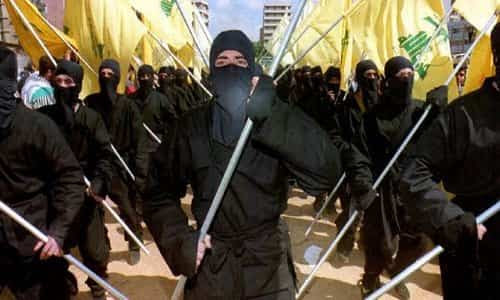
The End Time Combo = The Mouth of the Beast and the False Prophet
King Charles & The Pope’s Ecumenical Service – A Dangerous Illusion Of Unity
It was a sight unimaginable for five centuries: beneath the vaulted frescoes of the Sistine Chapel, King Charles III and Queen Camilla sat alongside Pope Leo XIV in a joint worship service blending Anglican and Roman Catholic elements. Golden thrones, sacred music, and solemn prayers filled the room — a scene rich with symbolism.
And yet behind the beauty of the ceremony lies a deeper question: What kind of unity is this?
For the first time since the English Reformation, a reigning British monarch — sworn to uphold “the Protestant Reformed religion established by law” — joined a Pope in public worship. Some heralded the event as a healing of old wounds between Canterbury and Rome. Others, especially among evangelical believers, saw something else — a troubling blurring of lines that God Himself drew through the very truths of the gospel.
Because while unity is noble, unity without truth becomes deception. To pretend that five hundred years of theological difference have suddenly evaporated under the glow of good will is not reconciliation — it’s denial.
Let us indeed be civil. Let us be charitable. But let us not be confused. Truth matters. And love rejoices in truth, not without it (1 Corinthians 13:6).
Below are ten core distinctions that still separate Roman Catholic teaching and Protestant, evangelical conviction — distinctions that remain as relevant today as they were in the days of Luther and Tyndale.
- Scripture Alone vs. Scripture Plus Tradition
The heart of the Reformation beat around one phrase: Sola Scriptura — “Scripture alone.” Protestants believe the Bible is the final and sufficient authority for faith and practice. The Catholic Church, by contrast, teaches that both Scripture and Sacred Tradition together form the Word of God, interpreted infallibly by the Magisterium.
This is not a small footnote of difference — it’s a fundamental question of authority. Who decides what is true? The Protestant answers: God’s Word alone. The Catholic answers: the Church, through its ordained hierarchy. And therein lies the danger. When any man or institution places itself above or beside the Word of God, it’s no longer God’s truth that rules the church, but human interpretation.
In every generation, this question resurfaces. Will we build our faith on the unchanging Word of God — or on a system that can redefine truth as it pleases? And to be fair – this is not just a criticism of how the Roman Catholic church approaches scripture. Numerous protestant pastors today treat the Bible as a buffet, picking and choosing what they feel is relevant and what is not. The whole counsel of God needs to be treated as inspired as written, not reinterpreted to our modern day progressive ideologue as so many woke pastors do.
- Justification by Faith Alone vs. Faith and Works
Protestants proclaim with joy that sinners are justified — declared righteous — by faith alone in Christ alone. It is a once-for-all act of grace. Catholics teach that justification is a process involving cooperation between human effort and divine grace, where righteousness is infused gradually through participation in the sacraments.
The difference is not theoretical — it’s the difference between peace and perpetual striving. If justification depends on my progress, I can never truly rest. But if justification depends on Christ’s finished work, I can stand secure.
The gospel that saves says: “It is finished.” The gospel that enslaves says: “Keep trying, perhaps you’ll make it.” One produces grateful obedience born of love; the other breeds fear, guilt, and uncertainty.
3. The Nature of the Sacraments
Rome teaches seven sacraments as channels through which grace is literally conveyed: baptism, confirmation, Eucharist, penance, anointing of the sick, holy orders, and matrimony. Protestants recognize only two — baptism and the Lord’s Supper — as symbolic yet powerful signs commanded by Christ.
The distinction is simple yet profound: do sacraments save, or do they point to the Savior? To the Protestant, baptism and communion are outward testimonies of inward faith. To the Catholic, they are means by which grace is dispensed, often apart from personal belief.
Christ never intended ritual to replace relationship. When ceremony eclipses the gospel, people trust the performance instead of the Person who redeems.
4. The Priesthood and Mediation
Protestants affirm the “priesthood of all believers” — that through Christ, every believer has direct access to God (1 Peter 2:9). The Catholic system maintains a hierarchical priesthood through which grace flows and forgiveness is pronounced.
But the New Covenant tore the veil in two. The High Priest is no longer a man in robes but the risen Christ Himself (Hebrews 4:14-16). To re-insert a human priest as mediator between God and man is to rebuild a wall that Christ died to destroy.
Let us respect our Catholic neighbors, but let us not yield this truth: the believer needs no earthly mediator to find God’s grace. The door is open — wide and forever — by the blood of Jesus alone.
5. The Eucharist vs. the Lord’s Supper
In Catholic theology, the bread and wine become the literal Body and Blood of Christ — a miraculous change known as transubstantiation. In Protestant belief, the elements remain bread and wine, serving as a vivid reminder of Christ’s once-for-all sacrifice.
The distinction matters because it reveals how each side views the cross. Protestants see the Lord’s Supper as a proclamation of a finished redemption — “Do this in remembrance of Me.” Catholic teaching sees it as a repeated sacrifice, a mystical re-presentation of Calvary.
The Protestant conscience trembles at that thought, for Scripture says Christ was sacrificed once for all (Hebrews 10:10). To repeat what was finished is to suggest the cross was incomplete. And if the cross is incomplete, the gospel collapses.
6. The Pope’s Authority and Infallibility
Catholics hold that the Pope is the vicar of Christ on earth, possessing universal jurisdiction and, when speaking ex cathedra, infallibility in matters of faith and morals. Protestants reject this entirely. Christ alone is Head of the Church, and no man can claim infallible authority over the people of God.
History shows what happens when spiritual power becomes absolute: truth bends to politics, and holiness gives way to hierarchy. The Reformers did not reject papal authority because they despised order — they rejected it because they loved Scripture. It is for that very reason that the majority of the Anglican church has now split from the authority of the Church of England due to it’s appointment of feminist/pro-abortion Sarah Mullally as the first female Archbishop of Canterbury.
The evangelical church must never again be seduced by claims of divine authority resting in human hands. We already have a perfect Shepherd and an infallible Word. We need no earthly crown beside it.
7. Mary and the Saints
The Catholic Church venerates Mary as “Queen of Heaven,” prays for her intercession, and celebrates doctrines like the Immaculate Conception and Assumption. Protestants honor Mary as the humble mother of Jesus — blessed, yes, but still a sinner saved by grace.
The problem is not respect but replacement. When Mary becomes co-mediator, Christ’s unique role as intercessor is eclipsed. When prayers rise to saints instead of the Savior, affection becomes idolatry.
Evangelicals do not dishonor Mary by refusing to pray to her; we honor her by imitating her words: “My soul magnifies the Lord.” She pointed to Christ, not herself. That is her enduring greatness — and the lesson Rome must still learn.
8. Purgatory and the Afterlife
Catholicism teaches that after death, believers undergo purification in Purgatory before entering Heaven. Protestants reject this as unscriptural. The Bible declares, “To be absent from the body is to be present with the Lord” (2 Cor. 5:8). Christ’s sacrifice was sufficient — nothing remains to be purged.
Purgatory sounds compassionate — a final cleansing before glory. But it quietly denies the completeness of grace. If sin remains to be burned away, then the cross did not finish its work. And if the blood of Christ leaves residue, what hope does any of us have?
The gospel says the believer’s sins are “as far as the east is from the west.” There is no halfway house between guilt and glory. In Christ, we pass straight from death into life.
9. Grace and Merit
Catholic doctrine teaches that grace is received through the sacraments and that good works can merit further grace and even eternal reward. Protestant theology insists that grace is entirely unearned — a gift that produces works, not the other way around.
The difference is subtle but seismic. In the Catholic system, man contributes to his salvation; in the gospel, man contributes only his sin. Grace, by definition, is unmerited. Once we add our effort to it, it is no longer grace at all.
The danger of any “grace-plus” theology is that it shifts glory from the cross to the creature. And as long as man takes even a sliver of credit, Christ’s crown is tarnished.
10. The Church Itself
Rome sees itself as the one true Church, outside of which there is no salvation. Protestants believe the true Church is the body of all who are born again by faith in Christ — a spiritual fellowship that transcends denomination, culture, and hierarchy.
The issue here is not structure but salvation. The Catholic Church ties spiritual life to institutional membership; evangelical faith ties it to regeneration. The one says, “Come to the Church, and find Christ.” The other says, “Come to Christ, and you’ll find His Church.”
Unity, therefore, cannot mean submission to Rome. It means fellowship in the gospel — not uniformity under papal rule.
Truth and Grace in Our Time
King Charles’s participation in this service marks an extraordinary historical moment — but not a theological reconciliation. The rift between Rome and biblical Christianity remains. We should not greet such events with hostility, but neither with naïve celebration.
True unity can never be built on blurred doctrine. It must rest on truth, repentance, and fidelity to the Word of God. The Bible calls believers to “speak the truth in love” (Ephesians 4:15). That means being gracious to Catholics while remaining unyielding on the gospel.
Let us hope this moment inspires dialogue, not delusion. May it renew in us the conviction that the gospel is not a shared compromise between traditions, but the blazing center of truth around which all true believers must rally.
Let the world see our kindness — but also our conviction. We can respect the Pope, honor the King, and still stand firm on the Rock that neither throne nor tradition can replace: Christ alone, Scripture alone, faith alone, grace alone, to the glory of God alone.
SIGNS OF THE TIMES
Run With Christ: The Gen Z Revival That’s Happening On The Move

Across America, a new kind of revival is running its course–literally. It doesn’t take place inside cathedral walls or conference halls, but on city sidewalks and park trails. It’s led not by seasoned pastors or celebrity influencers, but by twenty-somethings with sneakers, worship music, and a fire for Jesus.
They call it Run with Christ–and what started as one young man’s attempt to deepen his faith through exercise has turned into a movement uniting tens of thousands of young believers across more than 80 cities and five nations.
Faith in Motion
The story began with 21-year-old Will Garinger in Columbus, Ohio. What he thought would be a simple run club with a short devotional beforehand became something much larger–a spiritual awakening among a generation searching for something real.
On one September morning, hundreds showed up. People ran, prayed, and worshiped. Lives were changed. Garinger remembers seeing salvation, healing, and tears of joy. “I thought it would just be a little community,” he said, “but it became a place where people found Jesus.”
The idea spread like wildfire. City after city started new chapters–not because anyone told them to, but because someone simply said “yes.” One young person after another reached out, saying they longed for community, purpose, and hope. Within a year, Run with Christ was in over 80 cities and growing faster than anyone imagined.
From Isolation to Integration
Their slogan says it all: “From isolated to integrated through faith and fitness.”
It’s a rallying cry for a generation that’s tired of loneliness, tired of scrolling, tired of pretending. They want real connection. They want movement–physically and spiritually.
Every Saturday, young people gather–some shy, some skeptical, many broken–and find themselves surrounded by hugs, laughter, and worship. There’s no judgment. No competition. Just an invitation: come run with us, and meet the One who gives life its purpose.
Running is just the backdrop. The real race is the spiritual one.
A Generation Awakening
Something beautiful is happening here–something older generations have prayed for. The so-called “lost generation” of Gen Z is discovering what the world could never offer: the presence of God and the power of authentic community.
These runners aren’t chasing medals; they’re chasing meaning. They’re turning from addiction, anxiety, and self-doubt to a life filled with purpose. They’re finding that faith is not a spectator sport–it’s a journey meant to be lived out in motion.
As one participant put it, “We’ve tried everything–drugs, alcohol, chasing experiences–and we’re just tired. We’re ready to follow Jesus wherever He leads.”
There’s no stage, no spotlight, no polished sermon–just worship music echoing across city parks, hands lifted high, tears streaming, hearts changed.
Authenticity Over Aesthetics
At the heart of this movement is authenticity. Young people today have an uncanny radar for what’s fake. They can tell when religion is performative, when leadership is self-serving, and when faith has become more about image than intimacy.
But when they encounter something genuine–when they see love, humility, and the power of God–they respond. They show up. They run.
As one 20-year-old organizer put it, “Gen Z can recognize authenticity. We’re tired of the fakeness. We want to give our lives to something bigger than us–and that’s Jesus.”
The Spirit of Revival
When hundreds gather at dawn to pray and run for Christ, there’s a sense of something sacred in the air. It feels less like a fitness event and more like a revival–one without walls, without tickets, without denominational lines.
It’s the sound of sneakers hitting the pavement and worship songs filling the sky. It’s the sight of strangers laying hands on one another in prayer. It’s the miracle of community being reborn among a generation that the world said was too distracted, too distant, too broken to believe.
Steve Bannon Proposes “Christian State of Jerusalem” in New Regional Vision

“If you’re going to have a two-state solution, you have to have a three-state solution … one of those states has to be the Christian state of Jerusalem,” he said.
One State called a Freestate = Free for Jews , Muslims and Christians to Live in Unity !
Pastor Dirk Says
That is a Call From the Doctrine of Demons Christian Zionist Believers to be Included in the Original Two State Solution plan that will make out to be one of the 7 Year Peace Plan from the “Jewish Messiah” aka the Antichrist . Christian Zionist that want to go and do Animal Sacrifices in the New Jewish Temple.
White House Asked If Trump Plans to Rebuild the Holy Temple

Eyebrows were raised when a question about rebuilding the Holy Temple was asked in the White House press briefing room, bringing a subject usually found in Jewish study halls and prophetic discussions directly into U.S. political conversation.
Eyebrows were raised when a question about rebuilding the Beit HaMikdash (Holy Temple) was asked in the White House press briefing room on Thursday, bringing a subject usually found in Jewish study halls and prophetic discussions directly into U.S. political conversation. Mishpacha’s White House correspondent, Jake Turx, asked Press Secretary Karoline Leavitt whether President Donald Trump had ever discussed the prospect of supporting the Temple’s reconstruction in Jerusalem.
“To your knowledge, has the topic of rebuilding the Holy Temple in Jerusalem ever come up?” Turx asked, after noting Trump’s reputation for large-scale building projects and his newly revealed plans for a White House ballroom. “He’s likely gonna go down as the greatest builder of this era,” Turx said.
The exchange was brief, but it immediately recalled one of the most symbolically potent moments of Trump’s first term: the move of the U.S. Embassy to Jerusalem in May 2018.
Some have credited Trump’s success despite overwhelming and sometimes unscrupulous opposition to his attachment to Jerusalem, as per the verse in Psalms:
“Pray for the peace of Jerusalem: “May those who love you be secure.’ Psalms 122:6
Following the embassy move, the Sanhedrin minted a ceremonial coin depicting Trump alongside the Persian King Cyrus, who facilitated the Jewish people’s return from Babylonian exile and rebuilding the Second Temple. The Prophet Isaiah explicitly calls Cyrus “Moshiach” (Messiah) for playing this role in enabling Israel to return to its land and restore worship in Jerusalem. The comparison was not marginal or obscure — it gained traction among Christian supporters of Israel and appeared in Israeli political rhetoric as well.
Prime Minister Benjamin Netanyahu publicly drew the same comparison in 2018, saying that like Cyrus, Trump “made history” by recognizing Jerusalem as Israel’s capital. The suggestion that Trump’s policies had moved the Jewish people closer to restoring sovereignty in their capital city was accepted by many of his evangelical allies and taken seriously by some Jewish Temple activists.
The idea of a Third Temple is not speculative within the Hebrew Bible. The Prophet Ezekiel dedicates eight chapters to describing a future Temple with exact architectural measurements and designated rituals.
Several years ago, mentioning the Temple in a White House briefing would have been treated as marginal. Today, it was asked plainly — without laughter, without dismissal, and without scandal.
The Bible describes Jerusalem not as a negotiable city but as the center of God’s presence and the future gathering point for all nations. Isaiah wrote:
“For My house shall be called a house of prayer for all peoples.” (Isaiah 56:7)
Whether Trump has entertained the idea is clear: he has not. But the question itself now hangs in the air. It signals that talk of the Temple has entered the realm of public policy, political identity, and international religious meaning.
GOG AND MAGOG UPDATE
Israel Already Training For The Next October 7th Attack

Most of the world has learned to recognize the name Hamas–the militant group behind the October 7th attacks that plunged Israel into war. But fewer understand the other shadow looming to the north: Hezbollah.
Unlike Hamas, which operates from Gaza and rules through fear within Palestinian borders, Hezbollah is a far larger, more heavily armed army-like organization backed directly by Iran and embedded deep inside Lebanon. If Hamas represents chaos, Hezbollah represents calculation–and that distinction makes it even more dangerous.
Today, while Hamas still defies Israeli demands to disarm in the south and risks the wrath of President Trump, Hezbollah sits under a fragile truce in the north. But Israel knows better than to trust it. Beneath the surface of diplomatic calm, Hezbollah’s forces are rearming, reorganizing, and watching. And Israel, haunted by the lessons of October 7th, is wasting no time. It is training for the unthinkable: a coordinated, surprise invasion that could strike from Lebanon with deadly precision.
The Israeli Defense Forces are conducting intense 30-hour drills designed to replicate an October 7th-style assault–but this time, coming from land, air, and sea. In one simulation, hundreds of enemy fighters pour into northern Israel, attacking cities like Nahariya while others attempt to seize border outposts and kidnap civilians. The soldiers train to defend, recover, and counterattack–all under conditions meant to push them beyond endurance. There are no soft scenarios anymore; every exercise begins with chaos and ends only when order is restored.
One senior commander summarized the mindset bluntly: “The next attack will come unexpectedly. Intelligence can’t know everything.” That single statement captures Israel’s grim reality. The next war won’t arrive with warning sirens–it will arrive with shock, speed, and confusion. And Israel must be ready for it, because one defeat–just one–could be the end of the State of Israel as we know it.
Hezbollah’s position today is weakened but far from neutralized. Its infrastructure has been damaged, its ranks depleted, yet it still commands tens of thousands of fighters and a massive arsenal of rockets. More importantly, it remains a loyal servant of Tehran. Iran’s desire for revenge after years of setbacks is no secret. Should Israel show even the faintest sign of weakness–whether distracted by Gaza or political infighting–Hezbollah could strike, not alone, but in coordination with Iran and its proxies across the region.
For now, the odds of such an assault remain low. Hezbollah is still rebuilding, and international pressure has momentarily restrained it. Lebanon itself is teetering economically and politically, hardly in shape for another war. But that doesn’t mean the threat is gone–it only means the timing isn’t right. And Israel knows it.
Meanwhile, Hamas’ defiance continues to send a dangerous signal. Its refusal to disarm despite harsh language from President Trump shows it may be willing to risk it all for the sake of it’s survival. If Hamas can dig in and survive, why shouldn’t Hezbollah believe it can do the same? The message echoes across the region, eroding deterrence one day at a time.
Israel’s drills have taken what they have learned from the past two years and are implementing these changes nation-wide. Every weakness exposed on October 7th is being confronted head-on. Soldiers are trained to recover from system collapse, fight through confusion, and defend their communities without waiting for orders. Each northern town now has reinforced emergency squads, upgraded defenses, and quick-response teams ready to act within minutes. Israel’s military structure has been rebuilt from the ground up to ensure that when the next test comes, it will not break.